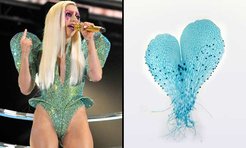What’s in a name? The stories behind some of science’s most curious names
Scientific research is an undertaking that requires a healthy dose of dedication. From the late nights in the lab to an inspired twist to a particular experiment, it could be argued that there is a bit of us in every scientific advance we make.
by Matthew H.K. Cheng and Raed Hmadi
This is especially true when a new phenomenon, molecule, or species is discovered, earning us the privilege of naming it. While some discoveries are named in honour of the scientists themselves, like the “Hawking radiation” or the process of “pasteurization”, others draw their names from other sources of inspiration. Whether they allude to literary references or reference pop-music giants, these names are often memorable and show us a more personal side to the scientists who chose them. Here are 10 of the Offspring’s favourite names in science and the stories behind them.
1. Bug
Field: Computer Science
Today, the term “computer bugs” commonly refer to glitches or unexpected anomalies in programming. However, the term was inspired by an actual bug! In 1964, American computer scientist and U.S. Navy rear admiral Grace Hopper was working at the Harvard Computation Laboratory when her team found a trapped moth to be the cause of errors in the Harvard Mark II computer. The moth was removed and appended into their log book.
2. Cloche
Field: Developmental biology
Organism: Danio rerio (zebrafish)
This zebrafish gene was named after the word “cloche”, French for “bell”. The name was inspired by the bell-shaped hearts of zebrafish mutants that lacked this gene. The cloche gene directs the timing and onset of a developmental program responsible for blood and blood vessel formation. The gene is highly conserved in nature, having been found in birds and humans. Scientists studying cloche believe that, given the gene’s role in development, the human version may represent an opportunity for new applications in personalized stem cell therapies.
- Stainier, D.Y. et al. (1995). “Cloche, an early acting zebrafish gene, is required by both the endothelial and hematopoietic lineages.” Development. 121(10):3141-50.
3. Gaga
Field: Taxonomy
In 2012, a genus of ferns have been named Gaga after the famous pop-star Lady Gaga. At one stage of its life, the new genus has somewhat fluid definitions of gender and bears a striking resemblance to one of Gaga's famous costumes that she wore during the 52nd Annual Grammy Awards. Furthermore, members of the new genus also bear a distinct DNA sequence spelling GAGA.
- Windham, M.D. et al. (2012). “Gaga, a New Fern Genus Segregated from Cheilanthes (Pteridaceae).” Systematic Botany. 37(4):845-860.

A striking resemblance. Lady Gaga’s Armani Prive dress from her 2010 Grammy Awards performance (left) bears a striking resemblance to the fern “gametophyte”: the bisexual reproductive stage of its life (right). Image courtesy of Karl Leif Bates, Duke Today, and Duke University.
4. Pikachurin
Field: Neurobiology
In 2008, a research group in Japan described a new extracellular matrix-like retinal protein that was thereafter referred to as Pikachurin. The protein increases the transmission speed of visual information from the eye to the brain. In fact, this function inspired the name Pikachurin, which references Pikachu, a species of the Pokémon franchise known for his lightning-fast moves and shocking electric effects.
- Sato,S. et al. (2008). “Pikachurin, a dystroglycan ligand, is essential for photoreceptor ribbon synapse formation.” Nat Neurosci. 11(8):923–931.
5. Quark
Field: Particle physics
In particle physics, quarks are elementary particles of matter and constituents of hadrons (protons and neutrons being the most stable). They were named inadvertently after the German term for a kind of cream cheese by Murray Gell-Mann, who took the name from the line in James Joyce’s Finnegans Wake:
“Three quarks for Muster Mark!
Sure he has not got much of a bark
And sure any he has it’s all beside the mark.”
Gell-Mann recalls in his book The Quark and the Jaguar: Adventures in the Simple and the Complex actually having the pronunciation “kwork” for the particle before coming across James Joyce’s work. He thought “quark” was fitting due to the way they are found in nature. Funny enough, the term “quark” can also mean “nonsense” or “rubbish” in German. The six types of quarks, with equally amusing and non-scientific names, are up, down, charm, strange, top and bottom.
- Gell-Mann, M. (1964). "A Schematic Model of Baryons and Mesons". Physics Letters. 8(3):214–215.
6. Scaptia beyonceae
Field: Taxonomy
The American recording artist and actress Beyoncé was an inspiration for naming a species of horse fly found in northeast Queensland, Australia. Interestingly, the horse fly has a dense patch of golden hairs forming a golden patch on its abdomen that reminded the scientists of the famous Queen B. Coincidentally, the fly was first collected in 1981, the same year the singer was born.
- Lessard, B.D. et al (2011). “New species of the Australian horse fly subgenus Scaptia (Plinthina) Walker 1850 (Diptera: Tabanidae), including species descriptions and a revised key.” Austral Entomology. 50, 241–252.
7. Smaug and Glorund
Field: Developmental biology
Organism: Drosophila melanogaster (fruit fly)
A Drosophila (fruit fly) RNA-binding protein is named Smaug, after the treasure-loving dragon from JRR Tolkien’s The Hobbit. In the early fly embryo, Smaug (the protein) prevents translation of an mRNA called nanos (the Greek word for “dwarf”), much like how Smaug the dragon tried to prevent Thorin and the Company of Dwarves from reclaiming the Lonely Mountain. Ten years later, another RNA-binding protein was identified, which prevents nanos translation in the ovaries (before Smaug’s function in embryos). Continuing with the theme, this protein was named Glorund after the first dragon in Tolkien’s lore.
- Smibert, C.A. et al. (1996). “Smaug protein represses unlocalized nanos mRNA in the Drosophila embryo.” Genes Dev. 10(20):2600-9.
- Kalifa, Y. et al. (2006). “Glorund, a Drosophila hnRNP F/H homolog, is an ovarian repressor of nanos translation.” Dev Cell. 10(3):291-301.

8. Sonic hedgehog
Field: Developmental biology
Organism: Homo sapiens (humans)
The mammalian gene and corresponding protein Sonic hedgehog was named after the SEGA video game character. It’s part of the so-called hedgehog family of signalling proteins which govern the organization and formation of the central nervous system and limbs in vertebrate embryos. The other genes/proteins in this family are Desert hedgehog and Indian hedgehog. The Drosophila version, named hedgehog, was the first one to be discovered. Whereas normal fly embryos have eight separate bands across their abdomen made up of neatly organized spikes called “denticles”, mutant embryos lacking the hedgehog gene are covered all over with these spikes.
- Krauss, S. et al. (1993). "A functionally conserved homolog of the Drosophila segment polarity gene hh is expressed in tissues with polarizing activity in zebrafish embryos". Cell. 75 (7):1431–44.
- Echelard, Y. et al. (1993). "Sonic hedgehog, a member of a family of putative signaling molecules, is implicated in the regulation of CNS polarity". Cell. 75 (7):1417–30.
- Riddle, R.D. et al (1993). "Sonic hedgehog mediates the polarizing activity of the ZPA". Cell. 75 (7):1401–16.
9. SUPERMAN, CLARK KENT, and KRYPTONITE
Field: Plant biology
Organism: Arabidopsis thaliana (thale cress)
This gene in the plant Arabidopsis thaliana is named after one of the most recognizable comic book superheroes, Superman. The SUPERMAN gene produces a protein that regulates flower development, and mutants lacking this gene develop extra stamens (the male fertilizing organ) and less pistils (the female fertilizing organ). The expression of this gene can be modified, leading to variations (epialleles) called CLARK KENT. And like Superman in the comics, expression of the SUPERMAN gene can be suppressed by the gene KRYPTONITE.
- Bowman, J.L. et al. (1992). “SUPERMAN, a regulator of floral homeotic genes in Arabidopsis.” Development. 114(3):599-615.
- Jackson, J.P. et al. (2002). “Control of CpNpG DNA methylation by the KRYPTONITE histone H3 methyltransferase.” Nature. 416(6880):556-60.
10. Swiss Cheese
Field: Neurobiology
Organism: Drosophila melanogaster (fruit fly)
Swiss Cheese is a transmembrane protein in Drosophila whose loss leads to a degeneration of neurons and glial cells, as well as increased apoptotic cell death. The name is inspired by the characteristic holes in the brains of adult flies that lack this protein. It regulates the process of glial wrapping in adult brain development, such that mutants show hyperwrapping of glial cells and increased apoptosis of neuronal cells. The vertebrate version of Swiss Cheese, also required for glial integrity and neuronal survival, is called Neuropathy Target Esterase - a rather ordinary name compared to its Drosophila counterpart.
- Kretzschmar, D. et al. (1997). “The swiss cheese mutant causes glial hyperwrapping and brain degeneration in Drosophila.” J Neurosci. 17(19): 7425-7432.
This list is by no means an exhaustive list, and perhaps we have missed some of your favourites! Whether you are studying a protein or object with a curious name, or have just come across it in the literature, we would love to hear from you. Send your favourite names in science to us at offspring@phdnet.de.
Tweet
